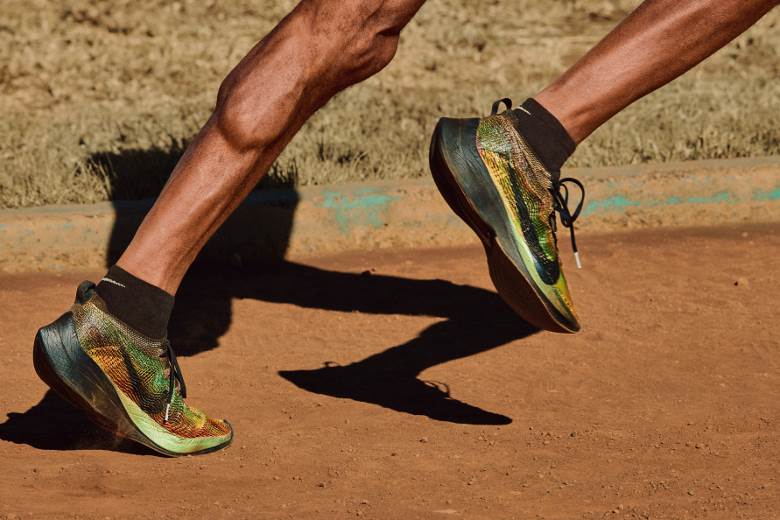Nike’s latest innovation will make its debut at the London Marathon
19/04/2018

The uppers are produced through solid deposit modelling (SDM). This involves a process whereby a TPU filament is unwound from a coil, melted and deposited in layers.
Nike has said the process allows it to produce prototypes 16-times quicker than in any of its previous manufacturing methods. This means a high number of iterations can be tested and revised in a short period of time.
Another advantage of this speed is that the Flyprint upper can be easily tailored to the needs of an athlete or for a specific function. After capturing athlete data, Nike is able to decide on the ideal composition of the upper before 3D-printing the final material.
The company has also explained that the fused nature of the Flyprint material allows for increased dynamism. While the interlaced yarns in knit or woven textiles cause frictional resistance, Nike says the fused intersections of its new material give “greater potential for precision-tuned containment”.
The first shoe to feature Nike’s Flyprint material is the Nike Zoom Vaporfly Elite Flyprint. It was developed with the help of one of the brand’s star athletes, Kenya Olympic Marathon champion Eliud Kipchoge.
The creation of Flyprint was driven by his feedback following victory at the Berlin Marathon in September 2017. Although he won the race, he was hindered by the wet conditions and humidity and he complained his footwear absorbed too much water. As a result, Nike began development of a new upper which would not absorb water and so not add any extra weight to the runner’s shoes.
After a rapid prototyping phase, during which Nike considered thousands of upper possibilities, it selected the best version and sent shoes featuring it for Mr Kipchoge to test at his training base in Kenya (pictured). His feedback was used to create the next version, which he eventually approved.
Mr Kipchoge will wear the Nike Zoom Vaporfly Elite Flyprint as he competes in the London Marathon on April 22.
Image credit: Nike.








